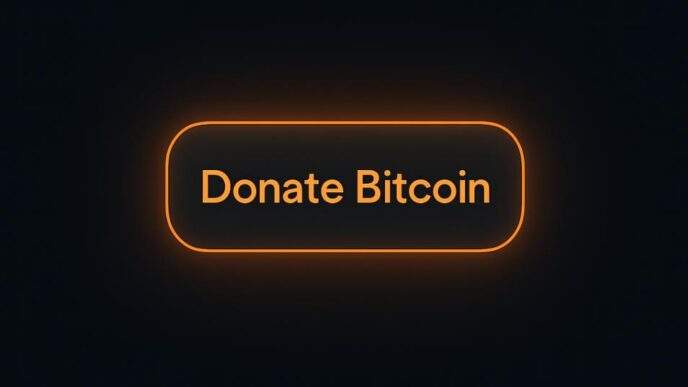Flash is pioneering a new era in digital payments leveraging the speed and low-cost efficiency of the Bitcoin Lightning Network alongside the decentralized communication capabilities of Nostr.
In a recent interview on Lightning News, Pierre Corbin, founder of Flash, laid bare his company’s ambitious vision to revolutionize online commerce by making the need for payment intermediaries obsolete.
Through Flash, merchants and shoppers can connect directly through convenient app connections, subscriptions and interoperable digital payments.
Table of Contents
Online Payments Without Intermediaries
A central tenet of Flash’s philosophy is the removal of traditional financial intermediaries that impose significant costs on merchants.
Corbin sees multiple layers of fees associated with credit card payments as uneccessary, noting that these costs are ultimately passed on to the consumer.
“What we try and focus on is removing all the intermediaries that come in the payment process so that it’s from your customer to you as a merchant directly and vice versa”.
Flash’s solution aims to “remove literally all intermediaries and only hold service providers,” facilitating direct payments from customer to merchant.
This peer-to-peer approach not only reduces costs but also cultivates a more direct and valuable relationship with customers. “Why add intermediaries if we can remove them?” Corbin explains.
Pierre Corbin’s vision for Flash is a compelling one for businesses seeking to embrace the future of payments.
Through self-custody, eliminating intermediaries, and leveraging the power of the Lightning Network and Nostr Wallet Connect, Flash offers a unique value proposition for payment providers, enterprises, and SMEs looking to tap into a global, censorship-resistant, and cost-effective payment infrastructure.
As the Bitcoin ecosystem continues to mature and regulatory clarity emerges, Flash stands poised to be a key player in ushering in a new era of decentralized commerce.
The ease of integration, coupled with the potential for innovative revenue models and direct customer engagement, makes Flash a key contender in the rapidly evolving landscape of digital payments.
Building Payment Applications on Lightning Gets Easier
Thanks to SDKs like Breez, developers can now prioritize software development and user-facing applications, capitalizing on the inherent advantages of the Lightning Network – its speed and minimal transaction fees – without requiring an in-depth understanding of its underlying infrastructure.
Corbin explains that “you can actually build a use case without needing to build a wallet”, a significant reduction in the technical complexities traditionally associated with Bitcoin integration.
This simplification lowers the barrier to entry for a wider range of businesses seeking to incorporate Bitcoin payments into their operations.
“The technology now is becoming very easy compared to what it used to be”.
Nostr Wallet Connect Enables Streamlined Payment Interactions
The technological underpinnings of Flash’s innovation reside in the synergistic application of the Lightning Network and the Nostr protocol, specifically through the implementation of Nostr Wallet Connect (NWC).
Corbin describes Nostr as a “decentralized network that allows to just send messages… very simple very lightweight development”. Building upon this foundation, NWC introduces a novel mechanism for applications to interact seamlessly with Bitcoin Lightning wallets by leveraging the exchange of Nostr events, rather than relying on conventional API integrations.
NWC’s could standardize communication between Bitcoin wallets and applications. Corbin further explains that “it’s like a shared standard for Bitcoin wallets as to how they communicate and how you can use their features just like APIs”.
Interoperability Across Multiple Payment Layers
NWC could extend beyond the Lightning Network, as ongoing development efforts to incorporate on-chain Bitcoin transactions alongside the already integrated support for the Liquid Network demonstrate.
Corbin envisions a future where “essentially every single payment network can be added to NWC and I think it even goes beyond Bitcoin i mean literally given how it works, Mastercard could add NWC they wanted to”.
The potential for unprecedented interoperability within the digital payments ecosystem is immense. “The lightning network really is the most interoperable network on Bitcoin”
Looking ahead, Corbin envisions a multitude of innovative applications empowered by direct, peer-to-peer Bitcoin payments, including enhanced direct-to-consumer engagement strategies, seamless and automated microtransaction-based services, and novel advertising models that directly reward users for their engagement.
“I’m genuinely excited by the idea that we can do microtransactions that are instant and that are almost free”
He suggests the integration of non-custodial tipping functionalities and pay-per-click advertising frameworks as potential catalysts for new economic interactions.
Risk Mitigation with Self Custodial Wallets
Corbin is a vocal advocate for self-custody as a cornerstone of financial independence and a crucial differentiator for the Flash platform.
By ensuring that its architecture never takes possession of user funds, Flash inherently exempts the need for conventional KYC and AML protocols at the platform level.
This design opens up access to a global market, including individuals and entities currently excluded from traditional financial systems due to restrictive KYC requirements.
Corbin notes that “Many places just do not have access to modern financial solutions because KYC is the issue” , a problem that Flash’s self-custodial approach directly addresses.
New Revenue Models for the Bitcoin Economy
Flash actively develops a comprehensive suite of business-oriented tools designed to support a broad range of revenue models tailored for the Bitcoin ecosystem.
These features include customizable paywalls, easily shareable payment links, embeddable donation widgets, fully hosted online storefronts, and seamless integration plugins for widely adopted e-commerce platforms.
Notably, Flash has pioneered automatic recurring payments (subscriptions) on the Lightning Network, a capability previously unavailable with self-custodial Bitcoin wallets.
The imminent integration of native subscription management directly within the Flash wallet promises to further simplify this process, with Corbin asserting that “right now we are the the Bitcoin payment gateway that supports the most revenue models for businesses” .
He emphasizes that “subscriptions was an interesting use case because the only way you do subscriptions is if you can trigger payments from a user’s wallet and it was impossible to do that with Bitcoin it’s only doable now with nostr wallet connect and we’re the first ones to have used it in this way”.
The Future Of Digital Payments
Flash allows businesses to tap into the benefits of Bitcoin and Lightning – speed, low costs, and global reach – in a seamless and secure manner.
The self-custody design reduces operational costs and associated risks while improving the user experience. As Corbin succinctly puts it, “why add intermediaries if we can remove them?” This fundamental principle drives Flash’s mission to architect the next generation of payment infrastructure, one that is more efficient, accessible, and empowering for all participants in the digital economy.
















